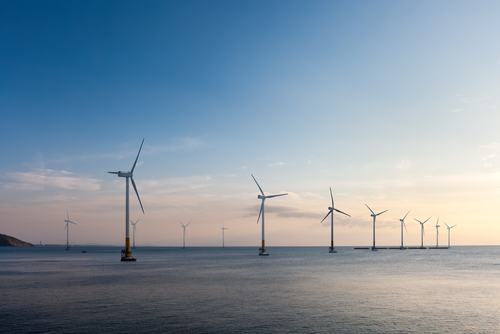U.S. offshore wind market reaches projected capacity of 51,377 MW, $25B economic output annually

Although still lagging behind progress in China and the United Kingdom, according to a report from the American Clean Power Association released last week, offshore wind for the United States is hitting its stride, with 32 leases and 51,377 MW of expected capacity in the works.
For context, this would be the equivalent of powering more than 20 million homes. Attached to such rapid expansion is a boost to the economy as well, with a separate report from 2020 crediting the development, construction, and operation of these projects leading to up to $25 billion in potential economic output per year and up to 83,000 jobs by 2030. So far, this would benefit 10 states in total, which have combined targets of more than 81,000 MW.
“American offshore wind power is vital to accelerating the deployment of clean energy, and the industry is stepping up to the plate to invest,” John Hensley, ACP’s vice president of research and analytics, said in the wake of the Offshore Wind Market Report. “The rapid growth in the U.S. offshore wind pipeline reflects strong federal and state government commitment to clean energy expansion and the industry’s response to those goals. These projects have the potential to create tens of thousands of jobs, reduce our nation’s dependence on foreign energy, provide coastal cities with reliable, clean power, and help the U.S. meet its emissions reduction goals.”
Currently, 42 MW are online along the U.S. coastline, so the combined 32 new leases would more than double the current capacity. New York leads the pack with 4,362 MW of capacity in the works, followed by New Jersey with 3,758 MW. BOEM lease sales last year generated nearly $5.4 billion in federal revenue, with particularly high prices seen at the New York Bight auction, and all of these gains are having ripple effects on other industries, including domestic shipbuilding, as more than 30 vessels are either on order or under construction to support the burgeoning industry. An additional 14 facilities for the domestic supply chain are either anticipated or under construction, with investment into major offshore wind components expected to exceed $1.7 billion.
The report did not focus exclusively on gains, though – it also reckoned with emerging issues. Supply chain disruptions have raised project costs, and inflation has also taken its toll, with the trickle-downs to commodity prices and higher interest rates. Steel prices, in particular, have surged, causing major concern in the industry. Beyond the monetary, though, the ACP also dinged lengthy and unclear permitting and regulatory timelines for exacerbating issues.
